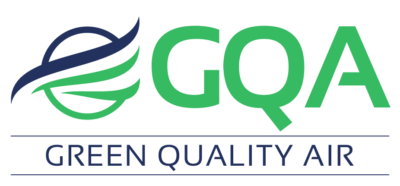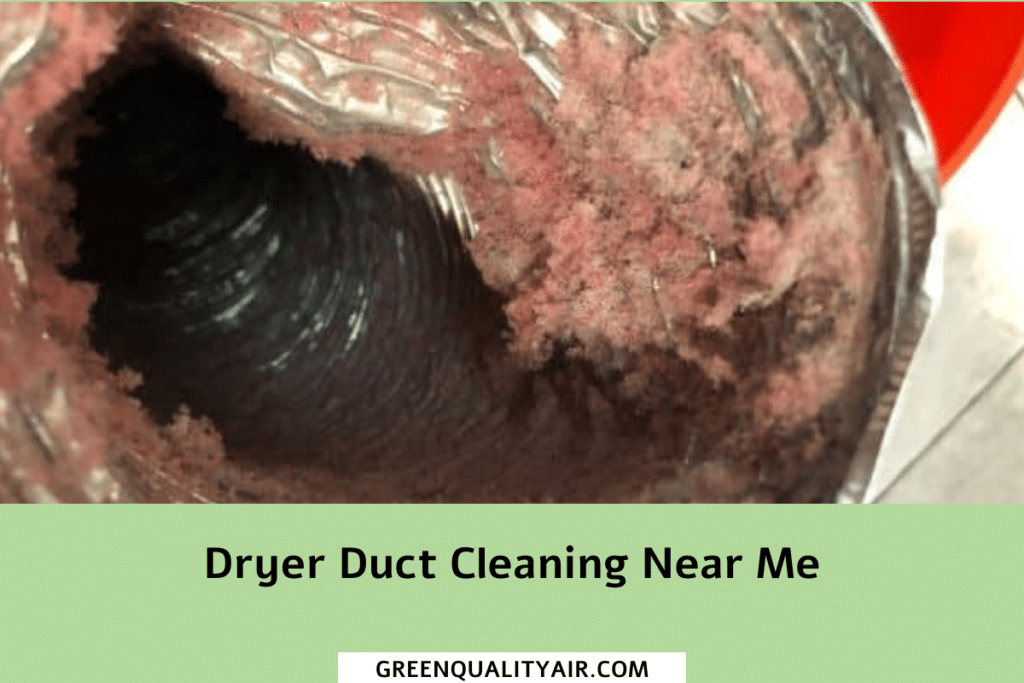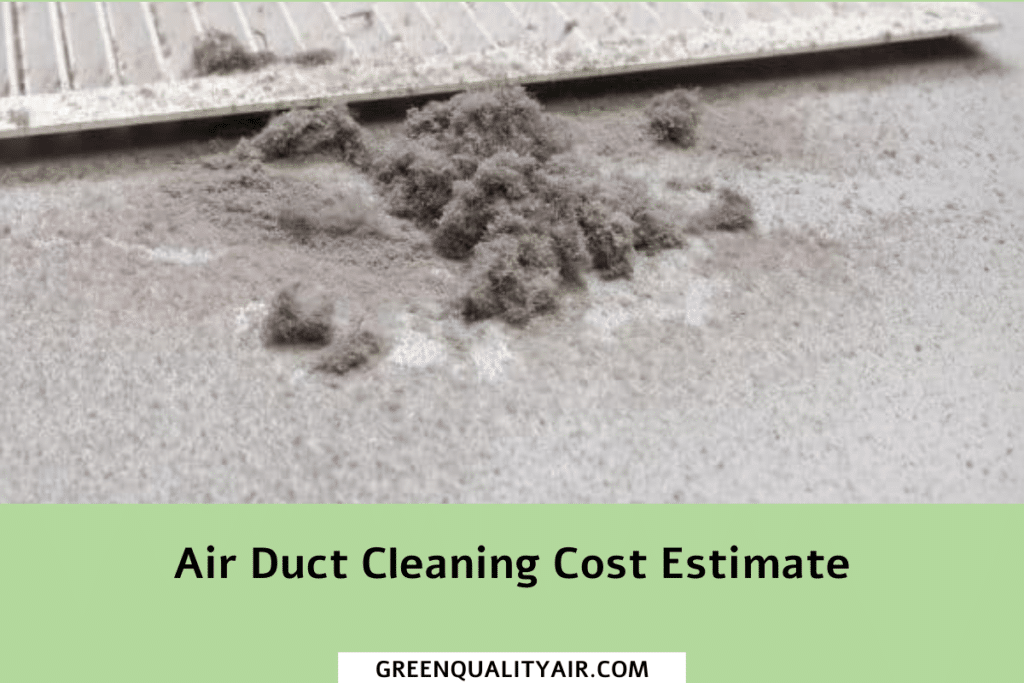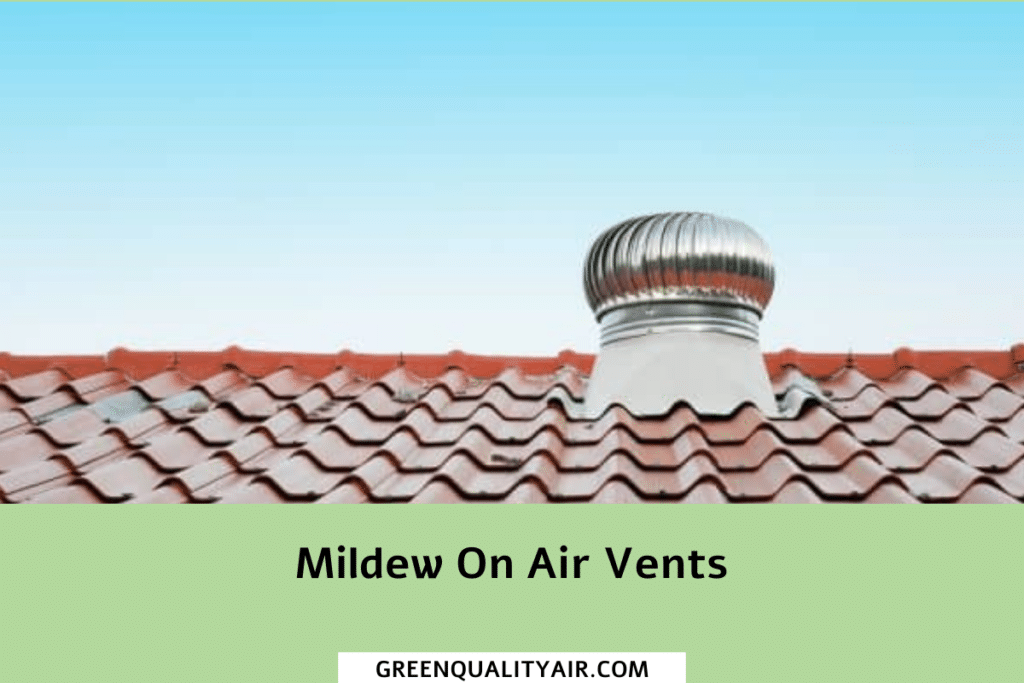Mold has long been a dreaded household problem, and no one wants to touch it or hear that it is growing in their home. So when you start seeing mold coming out of your air vents, fear can rightly kick into overdrive. It’s unpleasant to think about – and worse yet if the occupant of the house suspects they are getting sick because of what they inhale from these spores. Is there anything you can do? We’ll dive into this issue today and learn from experts about steps you can take when mold lives in your HVAC system.
What Is Mold and How Is It Related to Vents
Mold is an unwelcome visitor in any space, especially when it starts appearing in places where air circulates. One common place where mold can be found is coming out of vents. Mold is a type of fungus that can grow wherever there is moisture and a food source, which often includes the dirt and debris that accumulates in vents over time.
The damp environment of the vents can create the perfect conditions for mold to start spreading, which can lead to health problems and unpleasant odors in the air. It’s important to keep vents clean and dry to prevent mold from taking root and spreading throughout your home or office.
Contact Us
Identifying the Signs of Mold Growth in Your Home
Have you ever noticed a strange odor in your home or office? Perhaps you’ve noticed black or green spots on the walls or ceilings? These are all signs that mold could be lurking in your living space. But did you know that mold can also grow in your HVAC system and come out of vents? This can be a major health hazard, as mold can cause respiratory issues and allergic reactions.
It’s important to be vigilant in identifying the signs of mold growth, not just for your own health, but for the health of those around you. So, keep an eye out for any unusual growths or odors, and don’t hesitate to call a professional if you suspect there’s mold in your home. After all, your health is priceless.
Assessing the Degree of Infestation
As homeowners, we often focus on keeping our living spaces clean and tidy, but what do we do when we notice mold coming out of vents? Unfortunately, this is a telltale sign of a potential infestation that requires immediate attention. Assessing the degree of the infestation should be a top priority to mitigate any health risks associated with mold exposure.
Professional inspectors can conduct a thorough examination of the affected areas and recommend preventative measures to prevent future mold growth. While it may be tempting to tackle the problem on your own, it’s essential to seek the help of experts to ensure that all mold is safely removed and the air quality in your home is restored. Remember, early intervention is key in preventing and resolving mold infestations.
The Impact of Mold on Your Health and Home
Mold is a type of fungus that can pose some serious health risks, especially when found in your home. It can grow in various areas like bathrooms, basements, and even in your HVAC system. When mold begins to grow in your air ducts, it can be easily spread throughout your entire home.
One of the most frequent occurrences is mold coming out of vents. Breathing in this dangerous mold can cause severe allergic reactions and health problems such as headaches, breathing difficulties, and even lung infections. Additionally, mold can also cause damage to your home’s infrastructure, including walls, floors, and ceilings.
Therefore, it is essential to take regular precautions to avoid mold growth within your home and schedule inspections or cleanings to ensure your family’s safety.
More Articles
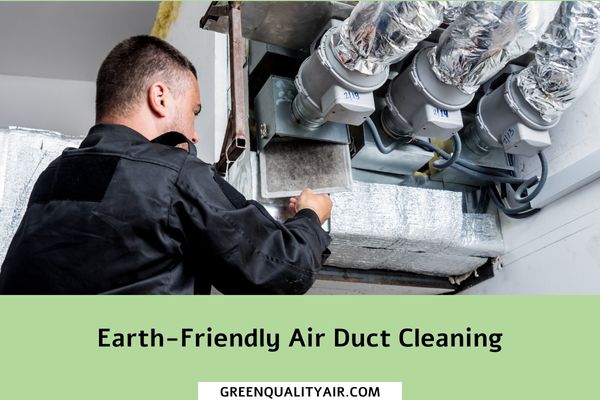
Earth-Friendly Air Duct Cleaning: Sustainable Solutions for Clean, Healthy Air
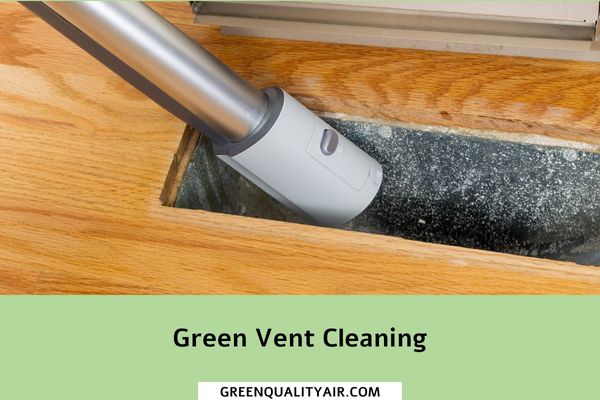
Green Vent Cleaning – A Comprehensive Guide to Sustainable and Effective Ventilation Maintenance
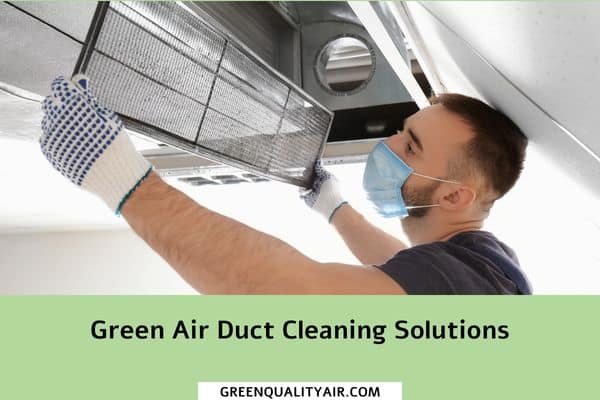
Breathe Easy with Green Air Duct Cleaning Solutions

Earth-Friendly Air Duct Cleaning: Sustainable Solutions for Clean, Healthy Air
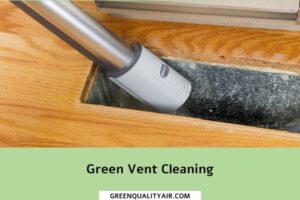
Green Vent Cleaning – A Comprehensive Guide to Sustainable and Effective Ventilation Maintenance

Breathe Easy with Green Air Duct Cleaning Solutions
Methods for Safely Removing and Preventing Mold Growth from Your Vents
Mold is a pesky problem that can not only be unsightly but also dangerous to your health. Mold coming out of vents is a common occurrence, causing numerous problems including respiratory issues and allergies. The good news is that there are ways to safely remove and prevent mold growth from your vents.
One method is to clean your HVAC system regularly to ensure the mold is not spreading. Additionally, you can install air purifiers and dehumidifiers to keep excess moisture at bay. By taking these steps, you can breathe easy knowing that your home is mold-free.
Important Questions to Ask a Professional Before Hiring Them for Remediation Services
If you’ve found mold coming out of your vents, it’s crucial to hire a professional to address the issue. But before you do, there are some important questions you should ask them to make sure you’re getting the best possible service. For instance, you’ll want to know what kind of training and certifications they have, since dealing with mold can be dangerous if not done properly.
You’ll also want to ask about their specific experience with this kind of remediation, and what methods they plan to use to remove the mold and prevent it from coming back. By doing your due diligence and asking the right questions, you can feel confident that you’re making the best decision for your home and your family’s health.
Mold growth in vents can be a severe issue that needs to be inspected, assessed, and treated without delay. It is important to understand the health risks associated with mold, the signs of infestation, and which removal techniques are safe for use in home environments. Additionally, it is crucial to ask the right questions when hiring professionals for remediation services. Don’t overlook mold in your vents — taking action now may save you from bigger issues down the line! Act today and make sure your home is clean and free of dangerous spores or fungi.
FAQ - Mold Coming Out of Vents
Whoa, what's that green stuff coming out of my vents?
First of all, let’s start by addressing the elephant in the room. The green stuff coming out of your vents is most likely mold. Yes, you heard that right – mold! Don’t panic just yet because there are several reasons why this could be happening and there are also effective solutions to address this issue.
Mold can easily grow in any damp and dark environment, making your air vents a perfect breeding ground. It can appear as black, white, or even greenish in color – hence the “green stuff” you spotted. This may seem like a harmless occurrence but it can actually be quite hazardous to your health if left untreated.
Now before we dive into the solution, let’s understand why mold is growing in your vents in the first place. The most common reason is due to moisture getting trapped inside your air ducts either from condensation or water leaks. This creates an ideal environment for mold to thrive on and spread its spores throughout your home.
But don’t worry, there are steps you can take to eliminate this problem and prevent it from happening again in the future. Firstly, it’s important to have a professional inspect and clean your air ducts regularly. Not only will this remove any existing mold growth but it will also improve the overall air quality in your home.
Additionally, make sure that any leaks or sources of excess moisture such as leaks from plumbing pipes or inadequate insulation are properly addressed to prevent future occurrences of mold growth.
Furthermore, investing in a dehumidifier for areas with high humidity levels can help keep moisture at bay and inhibit further growth of mold spores.
Lastly, prevention is always better than cure so maintaining proper ventilation by opening windows periodically and using exhaust fans when cooking or showering can significantly reduce the chances of developing mold growth inside your home.
In conclusion, finding “green stuff” coming out of your vents should not be taken lightly as it could signify a bigger underlying issue of mold growth. It’s crucial to take immediate action by hiring a professional to thoroughly clean and inspect your air ducts, addressing any sources of moisture, and maintaining proper ventilation in order to safeguard your health and the well-being of your home. Don’t let mold control your living space, take control now before it becomes a serious problem.
Can mold in my vents make me sick?
The simple answer to this question is YES. Mold in your vents can most definitely make you sick, and it’s important to take action immediately if you suspect there is mold present in your home.
First and foremost, let’s talk about what mold actually is. Mold is a type of fungi that grows in damp or humid environments, making your vents the perfect breeding ground for these pesky organisms. Not only can they grow inside the vents themselves, but they also have the ability to spread throughout your entire ventilation system, which can cause serious health hazards.
One of the main health risks associated with mold in your vents is respiratory problems. When mold spores are released into the air through your ventilation system, they can easily be breathed in and cause irritation to the nose, throat, and lungs. This can lead to symptoms such as coughing, wheezing, congestion and even asthma attacks.
But it doesn’t stop there – prolonged exposure to mold spores through contaminated air conditioning or heating systems has been linked to more serious health issues such as bronchitis and pneumonia. In fact, according to a study conducted by Mayo Clinic Proceedings , indoor mold exposure has been strongly associated with upper respiratory tract infections (URTI) and lower respiratory tract infections (LRTI).
In addition to respiratory problems, exposure to mold can also trigger allergic reactions in some individuals. Symptoms may include sneezing, watery eyes, skin rashes or hives – all of which are extremely uncomfortable and frustrating for those affected.
So why does mold grow in our vents? Well aside from dampness due to poor ventilation or leaks within our homes’ plumbing systems (which should be addressed immediately), HVAC insulation materials are often made from cellulose-based materials that provide an ideal food source for mold growth when combined with moisture.
It’s important not just for our physical well-being but also for the structural integrity of our homes that we take care of any mold growth in our vents as soon as possible. In addition to causing health issues, mold can also weaken the walls and ceilings where it grows, leading to costly repairs.
To tackle this issue, it’s best to seek professional help from a licensed and experienced HVAC technician. They will be able to assess the situation and come up with a customized plan of action for removing the mold and preventing future growth.
In conclusion, don’t underestimate the power of mold in your vents – it’s not just an inconvenience but a serious health hazard that should be dealt with promptly. So if you suspect there is mold present in your home, don’t hesitate to take action and protect yourself and your loved ones from potential harm.
How can I prevent mold from growing in my vents?
Mold growth in vents is a common problem faced by many homeowners. Not only can it cause unpleasant odors, but it can also have serious health implications if left untreated. The good news is that there are several effective ways to prevent mold from growing in your vents.
First and foremost, it’s important to understand why mold grows in vents in the first place. Vents provide the perfect environment for mold to grow – they are dark, damp, and often contain debris such as dust and pet hair which serve as food sources for mold. Furthermore, moisture from activities such as cooking, showering or even high humidity levels can accumulate inside the vents leading to ideal conditions for mold growth.
So how do we combat this issue? Here are some tried and tested methods that will help you prevent mold from growing in your vents:
Regularly clean and maintain your vents: This may seem like an obvious solution but it’s surprising how many people neglect this task. Make sure to clean your vents at least once every three months using a vacuum cleaner or a brush with long bristles specially designed for this purpose. This will remove any accumulated dust or debris that could be contributing to moisture build-up.
Control moisture levels: As mentioned earlier, excess moisture is one of the main factors that lead to mold growth. To keep moisture levels under control install dehumidifiers or exhaust fans in areas where there is high humidity like bathrooms or laundry rooms.
3.Unblock air flow: Obstructions within the ventilation system can contribute greatly towards creating an ideal environment for mold growth due to stagnation of air flow . Make sure nothing blocks airflow through your vents like furniture arrangement or objects placed too close.
4.Use anti-mold products: There are several anti-mold sprays available on the market specifically designed for HVAC systems that you can use regularly on your vent openings as a preventative measure against fungal infestations.
5.Consider professional cleaning: If your vents are heavily infested with mold, it’s best to seek professional help. HVAC technicians have specialized equipment and knowledge to thoroughly clean the vents and remove any stubborn mold growth.
In conclusion, preventing mold from growing in your vents requires regular maintenance and being mindful of moisture levels. By incorporating these preventive measures into your routine, you can keep your home’s air quality clean and ensure the health and safety of you and your family. Don’t wait until it becomes a bigger problem – take action now to prevent future mold growth in your vents.
First and foremost, let’s talk about what mold actually is. Mold is a type of fungi that grows in damp or humid environments, making your vents the perfect breeding ground for these pesky organisms. Not only can they grow inside the vents themselves, but they also have the ability to spread throughout your entire ventilation system, which can cause serious health hazards.
One of the main health risks associated with mold in your vents is respiratory problems. When mold spores are released into the air through your ventilation system, they can easily be breathed in and cause irritation to the nose, throat, and lungs. This can lead to symptoms such as coughing, wheezing, congestion and even asthma attacks.
But it doesn’t stop there – prolonged exposure to mold spores through contaminated air conditioning or heating systems has been linked to more serious health issues such as bronchitis and pneumonia. In fact, according to a study conducted by Mayo Clinic Proceedings , indoor mold exposure has been strongly associated with upper respiratory tract infections (URTI) and lower respiratory tract infections (LRTI).
In addition to respiratory problems, exposure to mold can also trigger allergic reactions in some individuals. Symptoms may include sneezing, watery eyes, skin rashes or hives – all of which are extremely uncomfortable and frustrating for those affected.
So why does mold grow in our vents? Well aside from dampness due to poor ventilation or leaks within our homes’ plumbing systems (which should be addressed immediately), HVAC insulation materials are often made from cellulose-based materials that provide an ideal food source for mold growth when combined with moisture.
It’s important not just for our physical well-being but also for the structural integrity of our homes that we take care of any mold growth in our vents as soon as possible. In addition to causing health issues, mold can also weaken the walls and ceilings where it grows, leading to costly repairs.
To tackle this issue, it’s best to seek professional help from a licensed and experienced HVAC technician. They will be able to assess the situation and come up with a customized plan of action for removing the mold and preventing future growth.
In conclusion, don’t underestimate the power of mold in your vents – it’s not just an inconvenience but a serious health hazard that should be dealt with promptly. So if you suspect there is mold present in your home, don’t hesitate to take action and protect yourself and your loved ones from potential harm.
Can mold growth in my vents indicate a bigger problem with my HVAC system?
As a HVAC technician with over 10 years of experience, I can confidently say that mold growth in your vents is not something to be taken lightly. While it may seem like a minor issue at first glance, it could actually indicate a much bigger problem with your HVAC system.
First and foremost, let’s talk about what causes mold growth in vents. Mold thrives in damp and dark environments, making the inside of your vents the perfect breeding ground for it. This moisture could be due to condensation from fluctuating temperatures or even leaks in your air ducts.
Now, you might be wondering why this is such a big deal? Well, aside from being unsightly and having an unpleasant odor, mold can also pose serious health risks for you and your family. Exposure to mold spores can lead to respiratory issues such as allergies and asthma attacks.
But here’s where things get even more concerning – if there is enough moisture for mold to grow in your vents, then there is most likely an underlying issue with your HVAC system that needs immediate attention. Whether it’s poor insulation causing temperature fluctuations or faulty air ducts causing leaks, these problems will only worsen over time if left untreated.
Furthermore, having mold in your vents means that every time you turn on your air conditioning or heating unit, the spores are released into the air circulating throughout your home. This not only puts you at risk but also spreads the potential for further mold growth into other areas of your house.
So what should you do if you suspect or have confirmed mold growth in your vents? The best course of action would be to contact a professional HVAC technician right away. They will perform an inspection of both the inside and outside components of your system to identify any hidden issues that may have led to the development of this problem.
Additionally, they will clean and disinfect all affected areas thoroughly using specialized equipment specifically designed for removing molds safely without spreading spores to other parts of your home. This will not only eliminate the mold but also address any underlying problems, ensuring that it does not return.
In conclusion, mold growth in your vents is a red flag that should never be ignored. Not only does it indicate potential damage to your HVAC system, but it also poses a threat to the health and well-being of you and your loved ones. Take immediate action by seeking professional help and safeguarding your home from this hazardous problem. Don’t wait until it’s too late – prioritize maintaining a healthy and functional HVAC system for the sake of yourself and those around you.
Is it safe to use my HVAC system if there is mold in the vents?
Before diving into the safety of using your HVAC system with mold in your vents, it is important to understand what mold is and why it can be a concern in this scenario.
Mold is a type of fungus that can grow in damp or humid environments. It reproduces by releasing tiny spores into the air, which can then land on surfaces and begin to grow if conditions are favorable. While most commonly found outdoors, mold can also grow indoors if there is excess moisture present. This brings us to the issue at hand – mold in your HVAC system vents.
First and foremost, let me assure you that having mold in your vents does not automatically mean that your HVAC system is unsafe to use. However, depending on factors such as the type and amount of mold present, as well as any underlying health conditions you may have, there are some precautions that should be taken.
One potential concern with having mold in your vents is its ability to circulate through the air when using your HVAC system. Mold spores can easily become airborne when disturbed by airflow from ducts or fans, potentially leading to respiratory issues for those who are sensitive or allergic to them. If you fall into this category or have family members who do, it would be wise to limit use of the HVAC system until the source of the mold has been identified and remediated.
Additionally, prolonged exposure to certain types of molds has been linked to health effects such as allergic reactions or even infections in people with weakened immune systems. If you or anyone living in your home falls under these categories, it would be best practice not only for their safety but also for yours, to contact a professional for further evaluation and potential removal of the affected area.
Now backtracking a bit – how did this issue occur? In most cases where there is visible growth within an HVAC system’s ductwork (the variety typically seen inside vents), moisture buildup has played a part. This could be due to a variety of reasons, such as leaky ducts or poor ventilation. It is important to address and correct the source of the moisture in order to prevent future mold growth.
To ensure the safe use of your HVAC system when mold is present, it is recommended to have a professional inspection done. They can properly assess not only the extent of the mold but also any potential air quality issues that may arise from its presence.
In conclusion, while having mold in your vents may initially seem alarming, it does not automatically mean you need to stop using your HVAC system altogether. However, caution should be taken and professional help sought if necessary for both the safety and well-being of everyone in your home. By addressing any sources of moisture and properly remediating any visible mold growth, you can rest easy knowing that you are taking proactive steps towards maintaining a healthy indoor environment for yourself and those around you.
